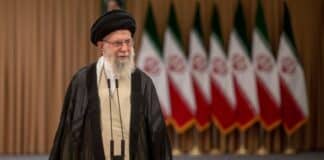As schools on Maui reopen following the tragic Lahaina fire, disturbing statistics emerge: 1 in 4 students might be absent, raising concerns about the whereabouts of the island’s children.
The flames that razed the town have left an indelible mark, displacing nearly 5,000 residents and leaving over a thousand unaccounted for, according to a report from The Post Millennial.
The fire, which tore through Maui on August 8, reportedly began following a brush fire in Upcountry Maui, exacerbated by strong winds of up to 67 miles per hour.
The winds, resulting from Hurricane Dora, reportedly made conditions ripe for a fire, and reports suggest downed power lines ignited dry vegetation in Lahaina, propelling the disaster.
Schools across Lahaina, from elementary to high school, enrolled over 3,000 students before the fire.
As classes recommence, just 400 of these students have been registered in other public institutions.
An additional 200 have opted for distance learning, leaving many others’ statuses uncertain.
Alex Fielding, CEO of Privateer, who has been aiding in restoring power and Wi-Fi to the affected zones, shared the somber reality: “I can’t imagine what roll call looks like … when one in every four is likely not going to be there in those classes, in those neighborhoods. I don’t know how you have enough teachers or counselors or therapists, or how you there’s no way to do justice to the real tragedy on the ground.”
The intensity of the inferno raises further complications in assessing the final death toll, currently at 114.
Hawaii Governor Josh Green revealed on Face the Nation, “We do have extreme concerns that because of the temperature of the fire, the remains of those who have died, in some cases, may be impossible to recover meaningfully. So there are going to be people that are lost forever,” Post Millennial notes.
He added that the recovery process, which involves inspecting larger buildings, “could take weeks.”
A pressing concern is the number of children among the lost. As schools were shut on the day of the fire, many children were at home, often under the care of grandparents.
Jessica Sill, a kindergarten teacher in Maui, emphasized the dilemma faced by parents: “Our parents work one, two, three jobs just to get by and they can’t afford to take a day off… Without school, there was nowhere for [kids] to go that day.”
The fire’s origin is still under investigation. Preliminary reports hint at power lines as potential culprits.
This has spurred legal action against utility companies, accused of not discontinuing power despite the evident risk.
Moreover, decisions during the fire’s onset have come under scrutiny.
Despite the approaching threat, local sirens, typically used for tsunamis, remained silent.
Governor Green stated, “Do I wish those sirens went off? Of course I do.”
He explained that such alarms haven’t historically been used for fires.
Another controversy revolves around a delay in releasing water to aid firefighting efforts.
M. Kaleo Manuel, who has since resigned from his post as deputy director of the Hawaii Commission on Water Resource Management, reportedly hesitated for hours before approving a water diversion request.
The Lahaina community, caught unaware, took desperate measures.
Approximately a hundred residents sought refuge in the Pacific Ocean from the advancing flames, requiring Coast Guard intervention.
Today, as recovery efforts continue, the scars of the Lahaina fire serve as a grim reminder of nature’s fury and the importance of preparedness and timely action.






